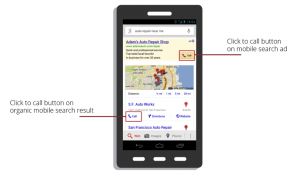Many presentations are, well, not good. If you want to stand out among the other startups and gain more press attention, buzz, investor dollars, and early customers, good presentations can help a lot. And I’m not impressed by war stories about busy execs to create their slides ‘in the cab from the airport.’ Chances are their audience could tell. Do yourself a favor and put in some real prep time and practice. – TM
 Presentations are used in every marketing program. Your CEO may burnish your brand at an industry conference as part of your reputation programs. Webcasts may be a critical part of your demand generation, and your field sales force may need to learn the company pitch as part of sales enablement. Presentations are used all the time by analyst relations teams as part of market intelligence programs. But for as important as they are, why are there so many bad ones? Think about it—how often have you been utterly bored to tears watching someone drone on, or annoyed when a presenter tries to jam a hundred-slide presentation into thirty minutes?
Presentations are used in every marketing program. Your CEO may burnish your brand at an industry conference as part of your reputation programs. Webcasts may be a critical part of your demand generation, and your field sales force may need to learn the company pitch as part of sales enablement. Presentations are used all the time by analyst relations teams as part of market intelligence programs. But for as important as they are, why are there so many bad ones? Think about it—how often have you been utterly bored to tears watching someone drone on, or annoyed when a presenter tries to jam a hundred-slide presentation into thirty minutes?
But then again, there are speakers you remember. Presentations you remember. Maybe they were profound. Inspiring. Or maybe they just gave you exactly the information you were looking for—succinctly. This is not an accident. Good presentations do not occur by luck. Great presenters think long and hard about what they plan to say, prepare diligently, and practice, practice, practice.
The marketing team is responsible for creating presentations, presenting them, and training presenters from other departments. This post will cover the process of creating a good presentation. I am not going to cover presentation design, which is important, but less so than a good story and structure. I also don’t have space in this blog to cover the all-important process of speaker prep. If you want to know more about that, please refer to this longer post.
Conceiving The Presentation
Before creating a single slide, there is important work to be done. A presentation needs a purpose, a story and structure, and a clear sense of how it will open and end.
Purpose
Before effective presenters create any slides or write a script, they consider the purpose of the presentation. Are they looking to educate the audience concerning a new technology or technique? Are they attempting to demonstrate thought leadership by proposing bold new ideas? Is a salesperson trying to persuade a customer to select his or her product over the competition? Or, is the presentation an internal document intended to convince the CFO to increase the marketing budget?
An easy way to identify the purpose of a presentation is to ask yourself what you want your audience to be thinking as they leave the room. Your answer should frame your delivery and content. In this section, I will cover some of the more common elements you should consider when you define the purpose:
- Educating
- Selling
- Convincing
- Inspiring
Let’s take a closer look at each one.
When the purpose of your speech is to educate, make sure your pace is not too fast, use plenty of examples, and leave time for questions. Presenters who are trying to educate often hand out copies of their slides prior to the presentation. These handouts contain blanks next to the slides to encourage the listeners to participate by filling them in.
If your purpose is selling, then keep in mind that people do not like to be sold to, so your audience may put up a defensive mental barrier. To overcome this resistance, you should avoid over-the-top salesmanship, jargon, and smarmy behavior. Provide plenty of examples of how happy customers are using the product. Let these stories do the selling.
Convincing is a close cousin to selling. It applies to scenarios such as requesting a greater budget, investment in your startup, more headcount for your department, or the green light from the board for a new project. In such cases, make certain your business case or cause is rock solid, check and double-check all of your facts and numbers (errors are killers in these situations), and present a clear plan of how you will use the time, people, or money you are seeking.
Finally, presentations intended to inspire can be the most difficult to execute effectively. To a greater extent than the other types, they frequently rely on the presenter’s charisma more than anything else. If you are giving an inspiring presentation, make certain you have great stories that take your audience where you want them to go.
Story and Structure
Good presentations have a story. They have an arc. The purpose of a story arc—which is a standard motif in television dramas and movies—is to move a character or a situation from one state to another. The story arc need not be high drama. However, it must have a beginning, middle, and end. Ask any movie screenwriter, and he or she will tell you there’s a reason plays and movies have three acts—the format works. The key to creating the presentation, then, is to visualize that arc and how you are going to get the audience through your beginning, middle, and end in whatever time you have been allotted.
Brainstorming the Story
Two common methods to brainstorm stories are to use whiteboards and Post-it notes. Once you have a general idea of what you are going to talk about, sketch it out on the whiteboard. How you do this depends on your personality. Linear thinkers might use a timeline arc, highlighting the beginning, middle, and end, with all the points in between. Visual thinkers might prefer to draw a series of boxes to represent the slides, filling them in with key points and rough diagrams. Post-it notes can work the same way, but they are easier to reorder. Also, they enable you to discard ideas that don’t work.
Opening the Presentation
The worst opening to a presentation (next to silence and mortified stage fright) is something like this: “Hello, my name is John Smith, and I’m going to present to you on the history of axle grease.” Telling the audience the same thing that appears on your title slide does not add much value. In addition, you have likely been introduced already. Moreover, if you are at a conference, then your name will be in the program. Below is a much better method to begin a presentation:
- Opening statement: Begin with a statement—perhaps your ultimate goal, a challenge to the audience, or a value proposition.
- Summary: Briefly explain what you are going to cover—the bullets of your agenda.
- Provocation: Make a controversial or challenging statement to get your audience’s attention.
- Experience: Talk a bit about yourself, focusing on why your audience should listen to you.
- Conclusion: Tell the audience where you will end up. This will automatically get your audience thinking about where you are leading them, predisposing them to listen carefully, even if they may disagree with your conclusion.
This structure is often shorthanded as “Tell them what you are going to tell them, tell them, and then tell them what you told them.” Reworking our bad axle grease example above, an effective opening might sound something like this:
Axle grease is one of the most important petroleum derivatives ever invented. It helps our cars run, our farms harvest, and our factories produce. Yet, we are at risk of underinvesting in the production of this vital resource, which could have a massive, if unknown, effect on our economy. To help you understand this issue, I’m going to give you a bit of a crash course on axle grease. I’ll highlight the main areas of the economy that rely on it and explain why we face a potential shortfall. I’ve been working in this industry for twenty years, most recently as the CEO of the largest producer, and this is the biggest crisis I have ever seen. At the end of our sixty minutes, I hope you understand why I say this and why it’s vital we fix this problem.
Admit it, even a mundane topic like grease comes alive when it is presented this way. The presenter has summarized his case, told you a bit about himself, and let you know how he’s going to be communicating with you over the course of the next hour.
The Meat of the Presentation
Make sure the presentation itself—the meat—matches the introduction and supports the key points you are trying to make. Resist the urge to load everything you could possibly think of into it (a common sin when presenters are creating new presentations by mixing and matching slides from existing presentations). A concise presentation that gives exactly what is promised is always better. And, you will avoid the presentation sin of rushing through your slides to try to finish within the allotted meeting or speaking slot time.
Closing the Presentation
A good closing ties back to the opening. Repeat the parts you want them to remember. Restate your provocation: “Now all of you understand why a shortage of axle grease would be catastrophic to our economy.” Some presenters use a journalistic technique known as the “kicker,” where they echo a theme from their opening in their closing. Our axle grease CEO might get cute with a kicker like: “I’m not just being a squeaky wheel. An axle grease shortage would be bad for all of us.” Use one of these two techniques and then thank the audience. You can display your contact information, but there’s no need to read it.
For more about how to design and present our axle great presentation, please refer to my longer post on the topic, or the full chapter on it in The Professional Marketer.
Thoughts? Or maybe you want to swap stories on the worst presentation you have ever seen? Let me know.
(235)







